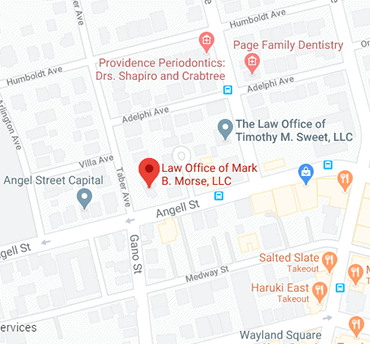The Impact Of Partial Fault On A Personal Injury Case
 In this article, you will learn:
In this article, you will learn:
- How long one has to file a personal injury claim
- Potential damages to be compensated
- When it is better to settle a case or take it to trial
As I indicated, the degree of comparative negligence and how it is administered will vary from state-to-state. Some states have, as in Rhode Island, pure comparative negligence, which means essentially that if you are 80% at fault, you will get 20% of the damages. Other states have a modified comparative negligence and they say that if you are more than 50% at fault, or 50% or more at fault, you’re not going to recover anything, which is the case in Massachusetts. So, your degree of fault is going to affect you differently depending upon which state you are in. At the very worst, it could defeat any recovery that you might have. On the other end of the spectrum, you will be able to recover up to the percentage you are determined to be at fault.
The Statute Of Limitations On Filing A Personal Injury Claim
In Rhode Island, it’s supposed to be three years from the date the incident took place. There are some qualifications, so that’s not an absolute hard-and-fast rule. If there are reasons why you were unable to discover the condition until sometime afterwards, then that may extend the statute of limitations. If you are under a particular disability, such as a mental disability, that would require a guardianship, it may delay the statute of limitations. If you are a minor involved in a situation, it may delay the statute of limitations. So, there are number of qualifying factors to the general rule in Rhode Island of three years. Again, in other states, it may be different. For example, Connecticut has a two-year statute of limitations in most cases, and there may be differences in other states as well.
There may be differences if the claim of negligence is one of medical negligence. Typically, states have different statutes of limitation for that situation. So, what is, on the surface, an easy answer, is not universal, and there are qualifications to that question.
Potential Damages In A Personal Injury Case, And How The Amounts Are Calculated
Damages are not calculated by throwing a bunch of beans up in the air and seeing which ones to land on the ground, and whatever stays on the ground, are what your damages are. That’s not the way we do it. What we consider is in many ways subjective, oftentimes based on what our client is relaying to us, and also based, in many respects, on what is contained in the medical reports. We look at these items, we hear from our clients as to how this has affected them, we look in the medical reports. We see if there’s information in the medical reports that indicate severity of an injury, either by way of treatment, or evidence such as X-rays, MRI testing, EMG testing, or some other form of evidence.
We consider the degree of injury that has occurred, how long is this injury going to last, and if scarring will last. If we do have scarring, where is the scarring located, how disfiguring it is and what sort of issues it has created for the person who has this disfigurement. How has this injury affected this person’s day-to-day activities and his overall life? Has the person lost time from work or inability to continue to work? I am handling a case now for an elderly doctor who is well above his retirement age. He was involved in an automobile collision and he said, if not for the injuries he sustained in this automobile collision, his plan and his goal was to work until age 85. At the time of the incident, he had been working and there’s no reason at all why he couldn’t have continued working until age 85 except for this injury.
So, we consider the effect of the injury that it has had on a person’s quality of life. Did the person miss important engagements, weddings, holidays and vacations with their children, the ability to play with their grandchildren? Was the person bedridden for a certain period of time? All of these factors are taken into account, and we try to use our professional judgment to ascribe a certain value to each of these diminishments that have occurred. We then total that up and try to reach a number that is fair, which responds to the type of injury and damages that this sort of incident has occurred as cost.
Deciding Whether To Settle Or Litigate A Personal Injury Case
We try to get an accurate snapshot as to what the prognosis is going to be, what it’s going to look like in the future, what we can expect based on past experience, and then using that past experience, projecting into the future what things are going to look like. Once we’ve reached a comfortable position in making that determination, we try to place a value, and either settle the case, or if at that point, we are unable to do so, bring the case and file suit. This is because filing suit is just the first process in that litigation. We are always trying to resolve the case for the client in as expeditious a fashion as we can. So, there are various opportunities that will arise during the course of the litigation in which we can either try to mediate, arbitrate, or otherwise try to resolve the case. We try to take full advantage of that process so that we can get you a recovery as quickly as possible without sacrificing the value of your claim.
For more information on Impact Of Partial Fault In A Personal Injury Case, an initial consultation is your next best step. Get the information and legal answers you are seeking by calling (401) 831-0555 today.

Call Now To See How We Can Help!
(401) 831-0555

